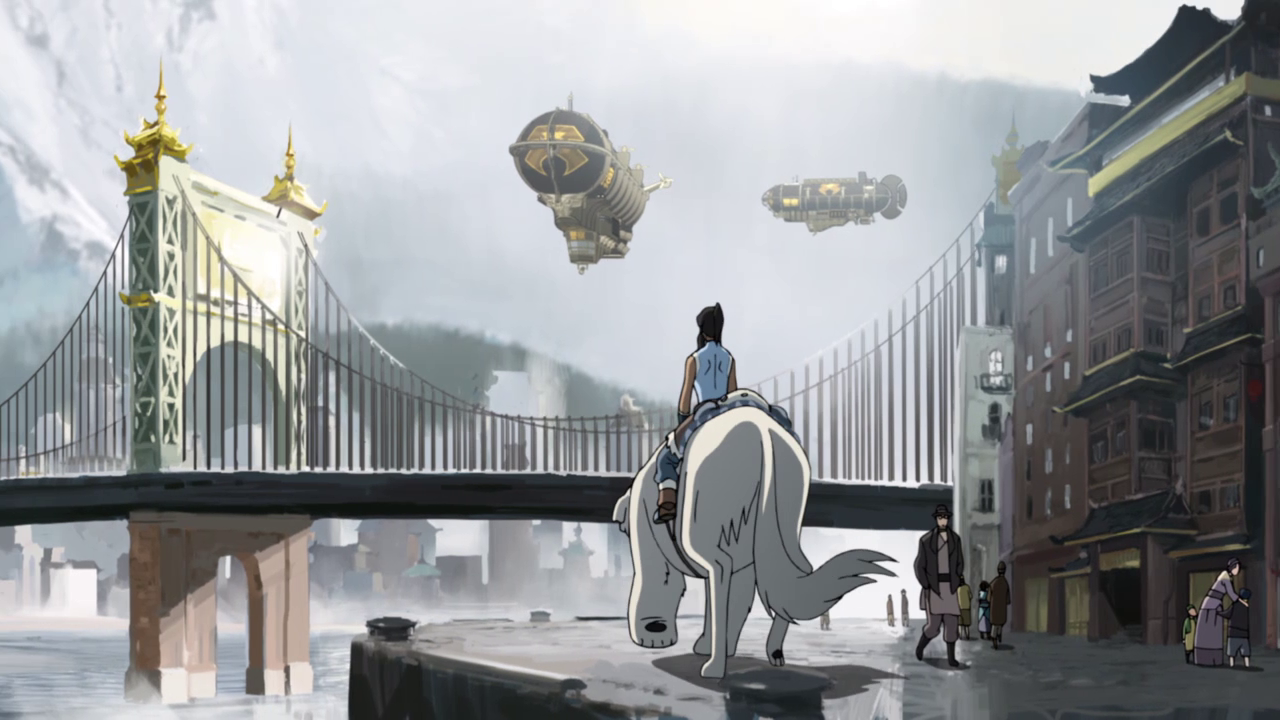Avatar: The Last Airbender (Nickelodeon, 2005-2008) was a popular show about a fantasy world in which some of its inhabitants have the special ability to “bend” the elements: air, earth, water, or fire. One person in the world is the Avatar. This person can bend all four elements, and is reincarnated throughout the world’s history. After The Last Airbender met with critical and commercial success, and with a plot device like reincarnation, a sequel show was a no-brainer, and thus The Legend of Korra (Nickelodeon, 2012-2014) was born.
The show follows the next reincarnation of the Avatar, a girl from the Southern Water Tribe named Korra. She trains under the son of previous Avatar Aang in Republic City, the seat of the new government that Aang helped create. The show is self aware in the respect that this new Avatar is living in the shadow of Aang, quite literally in fact, as a massive statue of Aang rests in the harbor near Korra’s new residence, Airbender Island. The show is even more self-aware in that the creators address the crowd immediately as a young child Korra yells, “I’m the Avatar, and you gotta deal with it!”
The fanbase of The Last Airbender is torn on Korra, with some praising the show and the new directions it takes the world, and some wishing the franchise had been left alone. I find myself on the side which favors the show, as it not only continues the themes of the original, but also pushes the envelope and the world in new and fascinating directions. The biggest of these changes is that the world has seen significant advancement since the original show. There are new technologies, like early automobiles and moving pictures, aka “movers” in this world, as well as new governments and more intermingling of the world’s cultures. This creates a setting that is simultaneously familiar and foreign to the viewer.
The show is not only about the Avatar, but also the people she surrounds herself with. Tenzin, her master, is the only Airbending master in the world. Bolin and Mako are brothers, an earthbender and a firebender respectively, and Korra’s Professional Bending teammates. Asami is a genius and daughter of a famous inventor. Lin Beifong is the gruff chief of the Metalbending Police in the city and the daughter of one of Aang’s best friends. There are also Tenzin’s children, Jinorah, Ikki, and Meelo, as well as Lin Beifong’s extended family, and several others. There are so many side characters that the world feels genuinely large, however, because there are so many, we do not get to see nearly as much development for their characters as we saw in The Last Airbender. Fortunately, a lot of time is spent on Korra’s development, making her the most engaging character to watch.
One way this show greatly expands on the world we know is by exploring the spiritual side of the Avatar’s duties. The Avatar is not only supposed to keep the four nations in harmony, but also the physical and spirit worlds. In The Last Airbender, we touch on the tip of the spiritual iceberg, but in Korra we dive right into the deep end, especially in season 2. This season is often regarded as the lowest in quality of the four, however, this is due to how much is spent focusing on spiritual matters rather than the more grounded politics that fans are used to. We deal with a villain of metaphysical status and abilities, as well as spiritual concepts that never get brought up in The Last Airbender.
Korra starts the show very confident in her abilities and her role as the Avatar, however, she often thinks too highly of herself. Each villain lowers her confidence in herself by dealing devastating blows to her, until she is finally broken and afraid. She has to learn to find confidence in herself and to see the value in everyone. She has to realize just how human she is to truly be the hero she knows that she is destined to be.




 RSS Feed
RSS Feed
